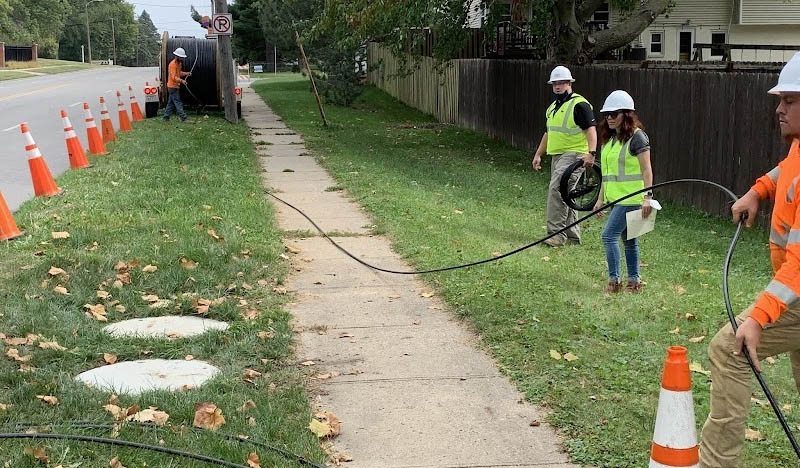How Long Can the Fiber Boom Last?
MoffettNathanson points to explosive growth in fiber build projects over past five years, but worries the cost may be too high

With practically every telecom and cable company moving to step up their fiber buildout plans over the next few years, MoffettNathanson senior analyst Craig Moffett wondered last Friday if the recent acceleration in construction was indeed too much, and whether telcos and cable companies will be able to justify the cost.
There is no question that broadband subscriber growth is slowing down, and that the remedy for both telco and cable providers appears to be investing more in building out and expanding their fiber reach. It makes sense in that the only way left for most operators to grow broadband is to either expand their footprint to homes that don't currently receive service, and/or boost new home growth. Since providers have no control over the latter, the former has been a big focus.
According to Moffett‘s report, over the past 20 years about 30% of the U.S. population has been overbuilt by fiber networks. But that coverage is expected to rise to 60% in the next five years and possibly 80% by 2033, as nearly every telco and cable operator has put forth plans to build new or expand existing networks. Based on announcements of fiber-to-the-home projects, Moffett estimated, telcos will add nearly 40 million new fiber passings between 2020 and 2025 for overbuilds alone.
“If fully completed, the additions would amount to an additional 25% of housing units (assuming 1% growth in total housing units per year), nearly doubling the current overbuilt cable footprint,” Moffett wrote.
Buildouts Come with Risks
But Moffett warned that the success of those projects is reliant upon buildout costs remaining low, penetration rates and average revenue per user (ARPU) numbers staying high and capital to fund the projects being easily available and cheap.
“Our conclusion is that there is simply too much enthusiasm for too many overbuilds,” Moffett wrote. “Some, it seems clear, will end in disappointment (or worse).”
Though buildout costs are relatively low now, Moffett noted that they probably won’t be as demand increases. Further pressuring companies is a shortage of available labor to build the networks that is only going to get worse as the number of projects increases.
The smarter way to stay on top of the multichannel video marketplace. Sign up below.
Also figuring importantly into the overall cost of a fiber build is whether it will be aerial or underground, and the housing density of the area it will ultimately serve. Moffett pointed to industry benchmarks that put the average cost of building aerial plant at about $25,000 per mile, with buried fiber costing about twice that. But that depends on a relatively large number of homes per mile, and the numbers can vary widely.
For example, Verizon Communications’ fiber network passes about 849.2 homes per mile, while Windstream passes about 126.4 homes per mile. The national average is about 37.3 homes per mile, but that too falls off substantially after the larger cities are taken out of the mix. According to Census data, the densest 10% of housing units are in areas where the homes number 10,100 homes per mile. The numbers fall sharply in the second 10% — 3,756 homes per mile and the last 10%, just 4 homes per mile.
Telcos tend to build fiber in more dense areas than their overall footprint. According to Moffett, based on Federal Communications Commission broadband deployment data, AT&T, Verizon, Frontier Communications, Lumen Technologies, Apollo, Ziply, Cincinnati Bell, Shenandoah Communications, and Windstream cover land areas averaging about 134 homes per square mile. Their fiber footprints average around 534 housing units per square mile.
Geography Matters
And then there is the geographical makeup of the area a company is building out. According to Moffett, the rockier the terrain, the costlier, and much of the less dense areas that are a key target of the federal rural broadband initiative are pretty rocky. He pointed to two builds — one in a particularly rural, particularly rocky area that cost $75,000 per mile to bury fiber. Moffett also cited a Communications Consulting Group study about the feasibility of building a municipal broadband network in Falmouth, Massachusetts, that said that hitting rock during construction could quadruple the cost per foot of building the network.
How much providers will charge for service also is going to be a function of the build costs and expected penetration rates. Moffett estimated that a provider that wants to charge $50 per month for fiber broadband and anticipates a 40% penetration rate, needs to keep costs around $1,500 per home passed.
In the end, whether telcos and cable operators continue their respective fiber buildout binges will depend on demand and how much customers are willing to pay. Despite the slowdown in broadband subscriber growth over the past few quarters, rural areas, where choices are few or nonexistent, appear to be hungry for higher-speed service. The economics of getting them that service will just have to work themselves out. ■
Mike Farrell is senior content producer, finance for Multichannel News/B+C, covering finance, operations and M&A at cable operators and networks across the industry. He joined Multichannel News in September 1998 and has written about major deals and top players in the business ever since. He also writes the On The Money blog, offering deeper dives into a wide variety of topics including, retransmission consent, regional sports networks,and streaming video. In 2015 he won the Jesse H. Neal Award for Best Profile, an in-depth look at the Syfy Network’s Sharknado franchise and its impact on the industry.

